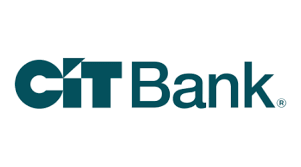I'm Retiring With $400,000. Am I in Good Shape?
KEY POINTS
- $400,000 can be a sufficient retirement nest egg for certain people, but not for others.
- The question is whether you'll have enough income after retirement, not how much you have in savings.
- By making some basic income calculations, you can get a good idea of how much you'll need to retire.
If you have $400,000 in your retirement accounts, are you financially ready to retire? Unfortunately, there isn't a straightforward yes or no answer to that question.
In simple terms, your retirement savings need is a combination of several factors. These include your current income, age, plans for after retirement, other retirement income sources, and more. By using some basic rules of thumb, you can get a good estimate of how much you might need to save for a comfortable retirement.
Do you need to boost your retirement savings? Click here for our up-to-date list of the best places to open an IRA right now.
It's not about the nest egg
Here's one of the most important retirement savings concepts you can learn. It doesn't necessarily matter how much money you have saved -- the better question is how much income can your savings produce?
Our Picks for the Best High-Yield Savings Accounts of 2025
| Product | APY | Min. to Earn | |

American Express® High Yield Savings Account
Member FDIC.
APY
3.70%
Rate info
3.70% annual percentage yield as of April 21, 2025. Terms apply.
Min. to earn
$0
Open Account for American Express® High Yield Savings Account
On American Express's Secure Website. |
3.70%
Rate info
3.70% annual percentage yield as of April 21, 2025. Terms apply.
|
$0
|
Open Account for American Express® High Yield Savings Account
On American Express's Secure Website. |

CIT Platinum Savings
Member FDIC.
APY
4.10% APY for balances of $5,000 or more
Rate info
4.10% APY for balances of $5,000 or more; otherwise, 0.25% APY
Min. to earn
$100 to open account, $5,000+ for max APY
Open Account for CIT Platinum Savings
On CIT's Secure Website. |
4.10% APY for balances of $5,000 or more
Rate info
4.10% APY for balances of $5,000 or more; otherwise, 0.25% APY
|
$100 to open account, $5,000+ for max APY
|
Open Account for CIT Platinum Savings
On CIT's Secure Website. |

Barclays Tiered Savings
Member FDIC.
APY
4.10%
Rate info
Balances less than $250,000 earn 4.10%, and balances greater than $250,000 earn 4.30%.
Min. to earn
$0
Open Account for Barclays Tiered Savings
On Barclays' Secure Website. |
4.10%
Rate info
Balances less than $250,000 earn 4.10%, and balances greater than $250,000 earn 4.30%.
|
$0
|
Open Account for Barclays Tiered Savings
On Barclays' Secure Website. |
Think of it this way. Let's say there are two retirees, and one has $500,000 in savings and a $1,500 per month Social Security income. The other has virtually no money in savings but has a $4,000 monthly pension in addition to a $1,500 Social Security check. Which is in better financial shape? If you ask me, I'd rather be the second one.
How much savings do you need?
There are no set-in-stone guidelines that can tell you the ideal amount of retirement savings, and even if there were, there's no way to know how your retirement investments will perform. But here's a basic set of steps that can help you determine approximately how much you should aim for.
First, determine how much income you'll need after you retire. Many financial planners suggest that you'll need about 80% of your pre-retirement income to maintain the same standard of living. So, if you earn $100,000 now, plan to need $80,000 per year in total income after retirement. (Of course, this isn't a perfect guideline. Adjust up or down if you anticipate different spending needs.)
Next, figure out how much will come from other sources. Virtually all retirees will have Social Security income, and if you have any pensions or annuities, be sure to consider those.
The difference will need to come from retirement savings in your investment accounts. The admittedly imperfect 4% rule of retirement says that you should be able to withdraw 4% of your savings in your first year of retirement, and increase your withdrawals for inflation in subsequent years, without much chance of running out of money.
To apply the 4% rule, simply multiply your income needed from retirement savings by 25 to determine how much you'll need to retire comfortably.
An example
Let's look at how this works. We'll use an example of a married couple with a household income of $100,000, so they'll need a total of $80,000 in income after retirement to live comfortably.
First, we'll say that each spouse will get $1,900 per month from Social Security, which is approximately how much the average retired worker gets in 2024. Between the two of them, this is $45,600 per year. We'll also say that one spouse expects a $1,000 monthly pension, for another $12,000 in annual income.
Subtracting these income sources from $80,000 shows that this couple will need about $22,400 from their retirement savings. Multiplying by 25 gives a ballpark retirement nest egg of $560,000 for a comfortable retirement. So in this case, $400,000 in savings isn't quite enough.
Finally, keep in mind that this is in today's dollars. It doesn't reflect any inflation that takes place between now and when you're ready to retire. Keep this in mind as the years go on and you reassess your progress.
The bottom line
Like most personal finance topics, there's not an easy answer to the question of "how much should I have saved before I retire?" And there isn't a perfect one-size-fits-all method to figure it out. But using guidelines like those discussed here can help you get a solid estimate of your retirement savings target that can help you adjust your savings strategy and retirement timeline as needed.
Our Research Expert
We're firm believers in the Golden Rule, which is why editorial opinions are ours alone and have not been previously reviewed, approved, or endorsed by included advertisers. Motley Fool Money does not cover all offers on the market. Motley Fool Money is 100% owned and operated by The Motley Fool. Our knowledgeable team of personal finance editors and analysts are employed by The Motley Fool and held to the same set of publishing standards and editorial integrity while maintaining professional separation from the analysts and editors on other Motley Fool brands. Terms may apply to offers listed on this page. APYs are subject to change at any time without notice.